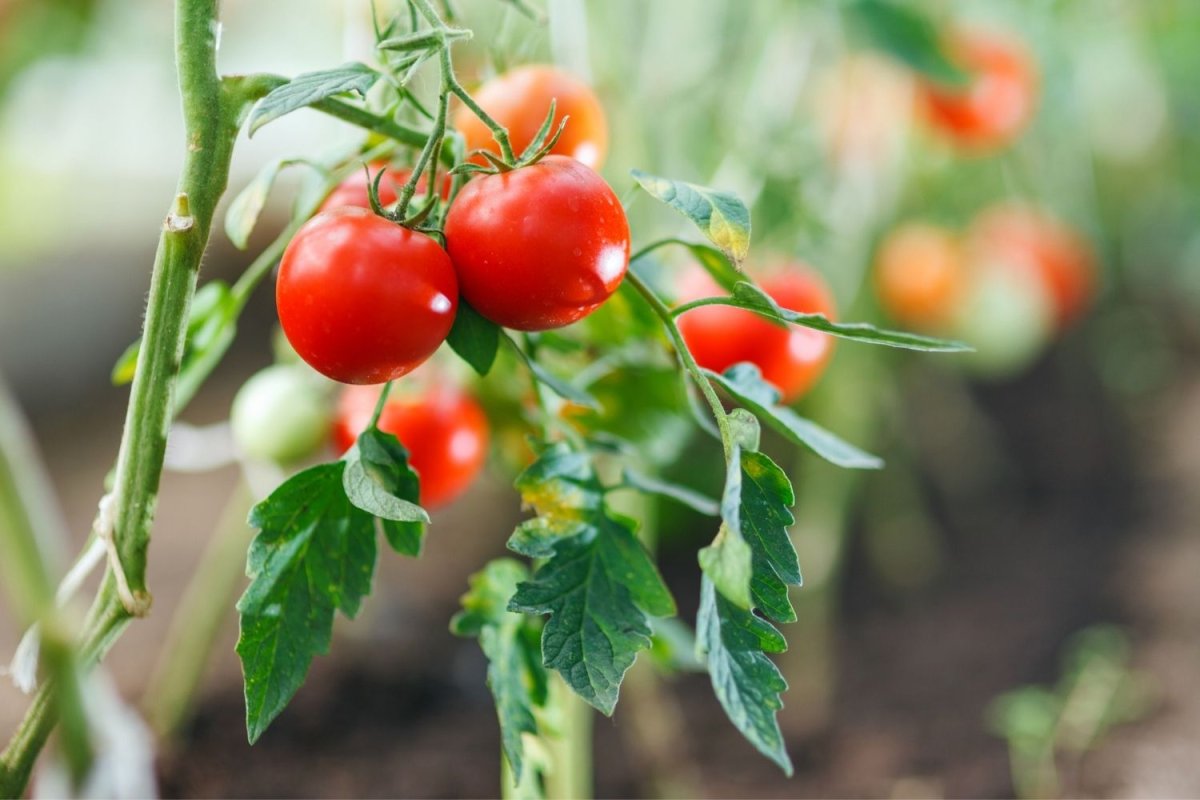

We may earn revenue from the products available on this page and participate in affiliate programs. Learn More ›
Q: Our tomato garden is doing really well this summer, and we’ll have far more than we can eat at once. Short of canning or dehydrating them, what advice can you offer about how to store tomatoes? How long can we expect them to last in storage?
A: When you ask gardeners how to store tomatoes, several tidbits of traditional wisdom often come up. Answers as divergent as “just put them in the fridge for a few days”, and “don’t put your tomatoes in the refrigerator” can both be correct. It all comes down to the condition of the tomatoes in question.
The best kinds of tomatoes to store are green tomatoes, or a tomato that’s specifically bred for long-term storage.
Many grocery store tomato varieties are bred, in part, for their storage ability. Some backyard tomato varieties, such as Red October and Garden Peach share that trait. However, most home gardeners grow backyard tomatoes for other characteristics. They’re mostly for savoring, not storing. But when you see an avalanche of homegrown tomatoes ripening on the vine, you can use a commercial grower’s strategy to get the most out of the harvest by maximizing your tomatoes’ storage potential.
If it appears that you’ll get more tomatoes than you can use in a few days, harvest some of them to ripen in storage. The best time to pick them is shortly after they reach full size and the color changes to pale green or half red and half green. At the mature green phase, ripening has already begun, and ripening is temperature sensitive. Keep green tomatoes at room temperature to ripen at a slower pace than those left outdoors in the garden.

Place dry, unwashed tomatoes in a storage bin.
When you harvest tomatoes, do not wash them immediately. Washing before storage only increases the potential for mold and spoilage. Instead, gently brush off any dust from the garden and place them into shallow, breathable bins for storage. Wash them just before eating.
The type of storage bin you use for tomatoes is not important, but remember to pad them and allow for good air circulation. Use a plastic storage tote (without the lid), a wooden crate, or a cardboard flat. For large quantities, stackable crates make it easier to protect the tomatoes while saving space. Pad the bottom of the bin with paper towels, and position the tomatoes in a single layer, stem scar facing down.
Store the tomatoes in a cool, dark space.
The ideal storage location for ripe tomatoes would be a dark room at 55 degrees Fahrenheit. At this temperature, they neither ripen further nor suffer cold damage, and remain in great condition for more than a week. Unfortunately, most gardeners do not have a 55-degree room in the middle of the summer. We must choose from either a 37-degree refrigerator or a 72-degree countertop.
Fully ripe tomatoes are less susceptible to cold damage than green tomatoes, so refrigeration is a viable option. Refrigerating them for 3 or 4 days extends their life, but temporarily degrades the flavor because the cold slows enzyme action. Move refrigerated tomatoes back to room temperature for a day or two to rejuvenate the flavor quality before eating them.
Ripe tomatoes last 5 to 7 days on the countertop at room temperature. They’ll continue to ripen, but even after a full work week, they’ll have great flavor and texture. Those who live without air conditioning should limit countertop storage to a 3-day supply due to higher average temperatures and faster ripening.

Related: The 30 Best Eco-Friendly Products
Use an apple box with individual paper wrappers, or make a small newspaper wrapper for each tomato.
When they reach the mature green phase, tomatoes begin to emit ethylene gas, which triggers ripening. If you harvest green or half-color tomatoes to ripen in storage, wrap each tomato individually in paper. The paper protects the tomato from damage while retaining some of the ethylene to assist with ripening. It takes about a month for green tomatoes to ripen when stored in this way.
At least once a week, check the tomatoes for mold and signs of rotting.
Even blemish-free tomatoes sometimes develop bad spots while they are in storage. Inspect stored tomatoes at least once a week and remove any with signs of bruising, mold, or decay of any kind. Doing so limits the damage from spreading to others in the batch. Otherwise, one bad tomato can spoil the bunch.
Of course, you can always can or dry tomatoes if you have a bumper crop. Just be sure to follow food safety guidelines for canning, storing, or freezing tomatoes.
